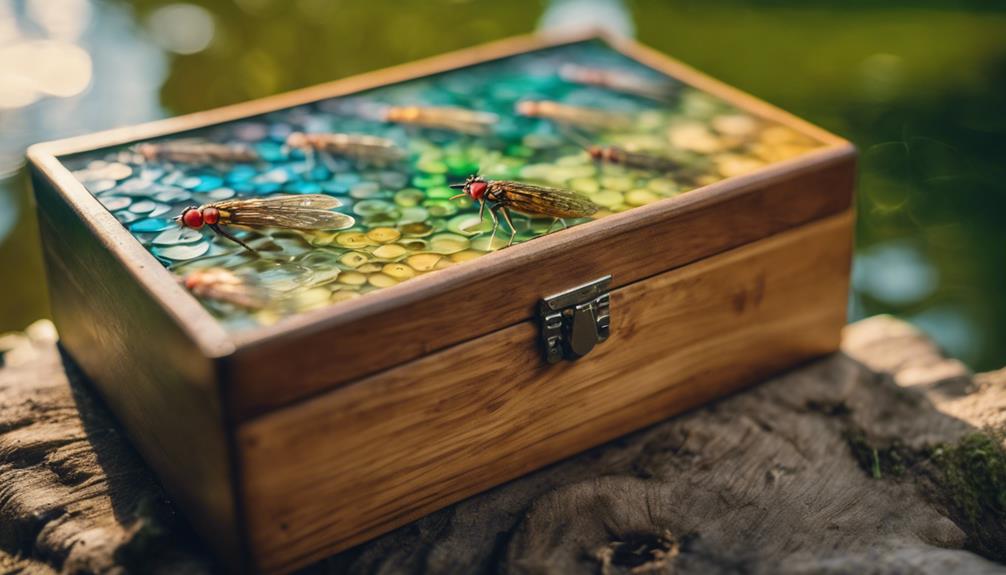Fly fishing in Colorado is more than just a pastime; it’s a way to connect with nature and experience the stunning beauty of the Rockies. Whether you’re an experienced angler or a beginner looking to learn the ropes, this guide will provide you with everything you need to know about fly fishing in the Centennial State. From the best locations to fish, essential gear, and techniques, we’ll cover it all.
Why Fly Fishing in Colorado Is a Must-Do Experience
Fly fishing in Colorado offers a unique blend of breathtaking landscapes and diverse ecosystems. The state is home to over 6,000 miles of rivers and streams, along with countless lakes and reservoirs, making it a paradise for anglers. The crystal-clear waters are teeming with species such as trout, bass, and even the occasional grayling. Beyond the fishing itself, the experience of casting a line against the backdrop of the Rocky Mountains creates a serene and peaceful atmosphere that draws anglers from all over the world.
Best Locations for Fly Fishing in Colorado
When it comes to fly fishing in Colorado, there are several prime locations that every angler should consider. Some of the most popular spots include the South Platte River, which is famous for its trophy trout; the Arkansas River, known for its accessibility and variety of fish; and the Frying Pan River, a blue-ribbon stream that provides excellent fishing year-round. Other notable mentions are the Colorado River, the Roaring Fork River, and the numerous alpine lakes that dot the landscape. Each location offers its unique challenges and rewards, making it essential for anglers to explore different waters.
Essential Gear for Fly Fishing in Colorado
To make the most of your fly fishing adventure in Colorado, having the right gear is crucial. Start with a quality fly rod and reel, ideally suited for the type of fish you plan to catch. A 5-weight rod is versatile enough for most freshwater fishing situations. Don’t forget to pack a selection of flies that match the local hatch; patterns like Adams, Elk Hair Caddis, and Woolly Buggers are popular choices. Additionally, bring along waders for comfort in colder waters, a net for landing fish, and a tackle box to keep your flies organized. Having the right equipment will enhance your overall experience and increase your chances of landing that trophy catch.
Understanding Fly Fishing Techniques
Mastering the various fly fishing techniques is key to success on the water. Basic techniques such as casting, mending, and retrieving can dramatically affect your catch rate. Practice your casting to achieve accuracy and distance; a roll cast can be particularly useful in tight spaces. Mending involves adjusting your line on the water’s surface to prevent drag, which can scare fish away. Lastly, understanding how to retrieve your fly effectively can mimic natural movements, enticing fish to bite. As you gain experience, experiment with different techniques to discover what works best for you in specific locations.
Best Times for Fly Fishing in Colorado
Timing can greatly influence your success when fly fishing in Colorado. The best seasons tend to be spring and fall when temperatures are moderate, and fish are more active. During spring runoff, many rivers can be swift and murky, so it’s crucial to choose your fishing days wisely. Early mornings and late evenings are often the most productive times to fish, as this is when insects are hatching, and fish are feeding. Additionally, understanding the local hatches can help you choose the right flies, increasing your chances of a successful outing.
Fly Fishing Etiquette and Conservation in Colorado
Practicing proper etiquette and conservation is essential for the sustainability of Colorado’s waterways and fish populations. Always be respectful of other anglers by giving them space and avoiding overcrowded areas. Follow the catch-and-release guidelines to help maintain healthy fish populations, and ensure that you’re familiar with local regulations regarding fishing licenses and limits. It’s also vital to practice Leave No Trace principles by cleaning up after yourself and minimizing your impact on the environment. By respecting nature, you’ll contribute to the preservation of Colorado’s beautiful fishing landscapes for future generations.
Fly Fishing Schools and Guided Tours in Colorado
If you’re new to fly fishing or want to improve your skills, consider enrolling in a fly fishing school or booking a guided tour. Many reputable outfitters offer classes that cover everything from casting techniques to fly tying. Guided tours can provide invaluable local knowledge, taking you to the best spots and helping you understand the nuances of Colorado’s waters. This can be a fantastic way to fast-track your learning process and enjoy a successful fishing trip while meeting fellow enthusiasts.
Final Thoughts on Fly Fishing in Colorado
Fly fishing in Colorado provides an unmatched experience that combines the thrill of the catch with the tranquility of nature. Whether you’re casting a line in a high alpine lake or navigating the rivers fed by mountain streams, the beauty of the state will leave a lasting impression on your heart and mind. Remember to equip yourself with the right gear, learn essential techniques, and respect the environment to ensure that your fly fishing adventures are both enjoyable and sustainable. With a little preparation and a sense of adventure, you’ll be well on your way to creating unforgettable memories in the stunning waters of Colorado.
—
By following this guide, you’ll be better equipped to enjoy all that fly fishing in Colorado has to offer. Remember, each trip is an opportunity to learn and connect with the natural world, so get out there and enjoy the adventure!
